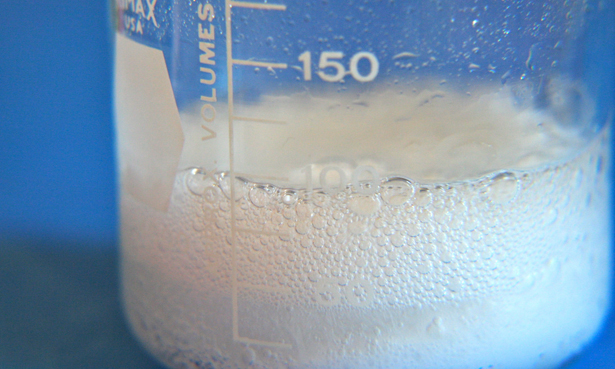Matt Shipman
May 2014
Baking soda has only one ingredient: sodium bicarbonate. Sodium bicarbonate is a base that reacts when it comes into contact with acids, like buttermilk, yogurt or vinegar. This reaction produces carbon dioxide (CO2) in the form of bubbles (think of the grade school experiments involving fake volcanoes, vinegar and baking soda). When making baked goods, this process is called “chemical leavening,” because the trapped CO2 gas makes the dough or batter rise.
But when baking soda comes into contact with an acid, it pretty much reacts immediately. And that’s a problem.
For many baking recipes, you want an extended reaction, so that the rising doesn’t take place all at once.
Baking powder addresses this problem because it is “double acting” — it has different ingredients that create CO2 gas at different stages of the baking process.
All baking powders contain sodium bicarbonate (just like baking soda). But baking powder also contains two acids. One of these acids is called monocalcium phosphate. Monocalcium phosphate doesn’t react with the sodium bicarbonate while it’s dry. But as soon as the baking powder is stirred into a wet dough or batter, the two ingredients begin to react, releasing bubbles of CO2 and causing chemical leavening.











